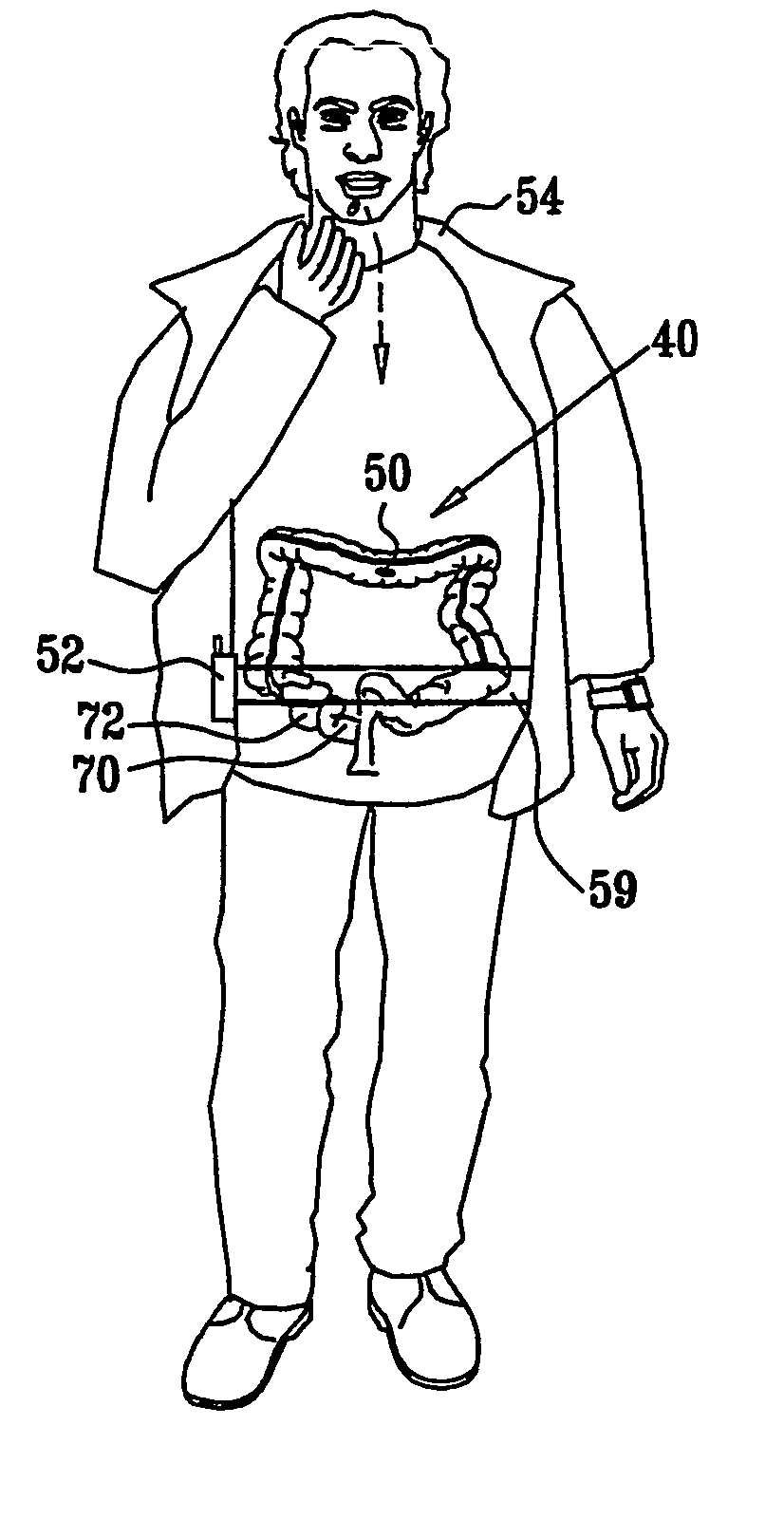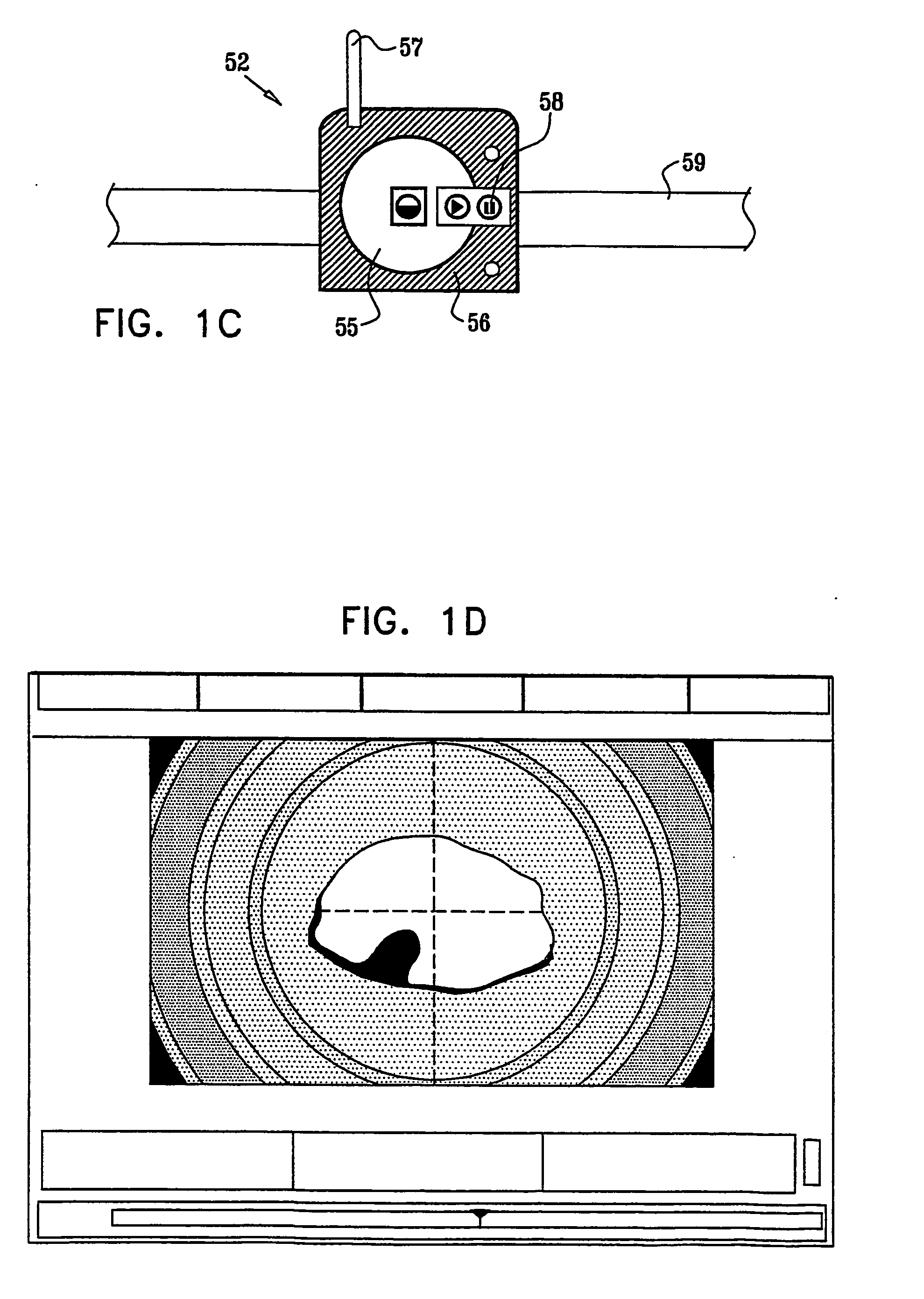Intra-lumen polyp detection
a detection field and lumen technology, applied in the field of intralumen polyp detection, can solve the problems of poor prognosis, 50% or less 5-year survival rate, 30% recurrence rate,
- Summary
- Abstract
- Description
- Claims
- Application Information
AI Technical Summary
Benefits of technology
Problems solved by technology
Method used
Image
Examples
Embodiment Construction
[0148] FIGS. 2A-D are schematic illustrations of apparatus for conducting an exemplary experiment that illustrates physical principles upon which some embodiments of the present invention are based, in accordance with an embodiment of the present invention. A container 12 is filled with a radio-opaque contrast agent 10 in liquid or low viscosity gel, and a reservoir 17 is placed below the container and filled with water 11. A small water-filled balloon 18 is placed at the bottom of the container. In this experiment, container 12 filled with contrast agent 10 simulates a colon filled with contrast agent, water-filled reservoir 17 simulates tissues and organs outside the colon, and water-filed balloon 18 simulates an anatomical abnormality, such a polyp.
[0149] In the experiment, a radiation source 14 and a radiation detector 16 are placed near each other. The open ends of a collimator 13 for source 14 and a collimator 19 for detector 16 are facing the liquid container. Radiation sour...
PUM
 Login to View More
Login to View More Abstract
Description
Claims
Application Information
 Login to View More
Login to View More - R&D
- Intellectual Property
- Life Sciences
- Materials
- Tech Scout
- Unparalleled Data Quality
- Higher Quality Content
- 60% Fewer Hallucinations
Browse by: Latest US Patents, China's latest patents, Technical Efficacy Thesaurus, Application Domain, Technology Topic, Popular Technical Reports.
© 2025 PatSnap. All rights reserved.Legal|Privacy policy|Modern Slavery Act Transparency Statement|Sitemap|About US| Contact US: help@patsnap.com



